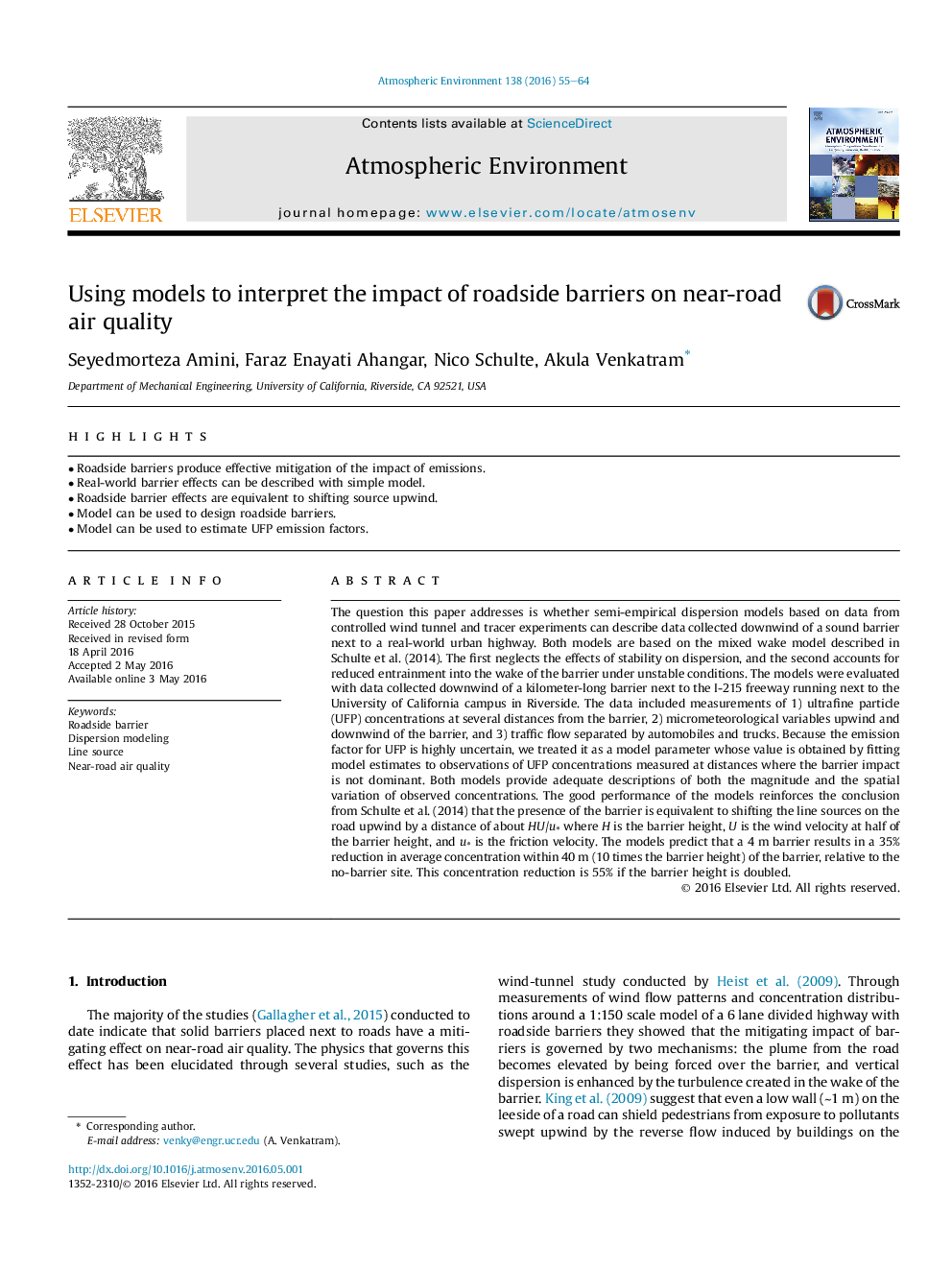| کد مقاله | کد نشریه | سال انتشار | مقاله انگلیسی | نسخه تمام متن |
|---|---|---|---|---|
| 6336526 | 1620336 | 2016 | 10 صفحه PDF | دانلود رایگان |
عنوان انگلیسی مقاله ISI
Using models to interpret the impact of roadside barriers on near-road air quality
ترجمه فارسی عنوان
با استفاده از مدل ها برای تفسیر اثرات موانع کنار جاده ای در کیفیت هوا در نزدیکی جاده ها
دانلود مقاله + سفارش ترجمه
دانلود مقاله ISI انگلیسی
رایگان برای ایرانیان
کلمات کلیدی
مانع کنار جاده، مدل سازی پراکندگی، منبع خط، کیفیت هوا نزدیک به جاده،
موضوعات مرتبط
مهندسی و علوم پایه
علوم زمین و سیارات
علم هواشناسی
چکیده انگلیسی
The question this paper addresses is whether semi-empirical dispersion models based on data from controlled wind tunnel and tracer experiments can describe data collected downwind of a sound barrier next to a real-world urban highway. Both models are based on the mixed wake model described in Schulte et al. (2014). The first neglects the effects of stability on dispersion, and the second accounts for reduced entrainment into the wake of the barrier under unstable conditions. The models were evaluated with data collected downwind of a kilometer-long barrier next to the I-215 freeway running next to the University of California campus in Riverside. The data included measurements of 1) ultrafine particle (UFP) concentrations at several distances from the barrier, 2) micrometeorological variables upwind and downwind of the barrier, and 3) traffic flow separated by automobiles and trucks. Because the emission factor for UFP is highly uncertain, we treated it as a model parameter whose value is obtained by fitting model estimates to observations of UFP concentrations measured at distances where the barrier impact is not dominant. Both models provide adequate descriptions of both the magnitude and the spatial variation of observed concentrations. The good performance of the models reinforces the conclusion from Schulte et al. (2014) that the presence of the barrier is equivalent to shifting the line sources on the road upwind by a distance of about HU/uâ where H is the barrier height, U is the wind velocity at half of the barrier height, and uâ is the friction velocity. The models predict that a 4 m barrier results in a 35% reduction in average concentration within 40 m (10 times the barrier height) of the barrier, relative to the no-barrier site. This concentration reduction is 55% if the barrier height is doubled.
ناشر
Database: Elsevier - ScienceDirect (ساینس دایرکت)
Journal: Atmospheric Environment - Volume 138, August 2016, Pages 55-64
Journal: Atmospheric Environment - Volume 138, August 2016, Pages 55-64
نویسندگان
Seyedmorteza Amini, Faraz Enayati Ahangar, Nico Schulte, Akula Venkatram,
